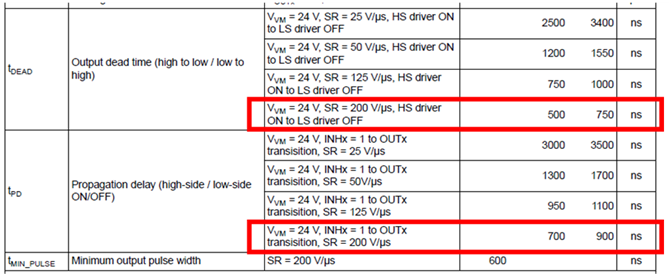SLVAF84 September 2021 DRV8311 , DRV8312 , DRV8313 , DRV8316 , DRV8332 , MCT8316Z
2 Direction of Current Into or Out of the Phase
When commutating with sinusoidal control, all three half-bridges are switching using synchronous PWM inputs with varying duty cycles and 120 degrees out of phase from each other. This results in smooth sinusoidal phase current (Figure 2-1), which means that the current direction of each phase is going into or out of the motor output pins (OUTx) of each phase. Depending on the direction of the current, the propagation delay can vary depending on whether the high- and low-side inputs (INHx and INLx) of the phase are rising or falling and the direction of current at that instant in time.
 Figure 2-1 Sinusoidal Current Control Waveforms
Figure 2-1 Sinusoidal Current Control WaveformsThis application report describes four scenarios of synchronous inputs switching, direction of current from OUTx, and how they can affect propagation delay and dead time using the DRV8316 integrated MOSFET BLDC motor driver. An assumption is made that there is no additional MCU dead time and INHx and INLx are synchronous PWM inputs. Furthermore, a fixed output slew rate of 200 V/µs is assumed and the propagation delay and dead time to the values mentioned in the data sheet in Figure 2-2 is compared.
 Figure 2-2 DRV8316 Dead Time and Propagation Delay Specifications for 200 V/μs Slew Rate
Figure 2-2 DRV8316 Dead Time and Propagation Delay Specifications for 200 V/μs Slew Rate